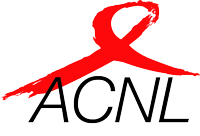Harm Reduction Fundamentals: A toolkit for service providers

Harm reduction is an important part of supporting the rights and health of people who use drugs. There is a growing demand for harm reduction information by all types of organizations that provide services to people who use drugs in Canada. This toolkit provides foundational information on harm reduction for service providers working with people who use drugs (including support workers, outreach workers, nurses and workers with lived and living experience). The toolkit is free to access and is available to anyone to use or share for personal learning, organizational trainings and/or other capacity-building efforts.
The toolkit contains four units that can be accessed individually or completed together for a more comprehensive overview of harm reduction fundamentals. Organizations and individual learners can decide which parts of the toolkit are most appropriate for them.
Each unit should take approximately one hour to complete; however, there will be variability depending on the unit and the level of engagement with content, videos, reflection questions and external links. We suggest setting aside four hours total if you plan to complete all four units.
Unit 1: Setting a foundation for harm reduction |
Topics:
|
Unit 2: Harm reduction principles and practices |
Topics:
|
Unit 3: Drug use, health and harm reduction |
Topics:
|
Unit 4: Supporting harm reduction service provider capacity |
Topics:
|
Acknowledgments
The information in this toolkit is based on decades of strong evidence about harm reduction. We wish to honour the instrumental roles that people who use drugs have played in building harm reduction practice, programming and policies and the related evidence base. Harm reduction exists because of people who use drugs’ bravery, creativity, care and commitment to their communities.
Canada is in the midst of a drug poisoning crisis. We mourn the lives that have been taken by bad drug policies and grieve alongside families, friends and other loved ones who have lost people. We hope that the information within this toolkit can play a small role in supporting people who use drugs today and in working toward a more just future.
This toolkit was developed in partnership with a working group of organizations, agencies and networks across Canada that have expertise and leadership experience in harm reduction. We are grateful to all members of this working group for their guidance, for sharing their decades of grounded expertise and for all the energy and knowledge they contributed to the development of this resource.
 | Image

|  |  |
 |  |  | |
 |  |  |  |
 |  |  |
National working group partners
AIDS Committee of Newfoundland and Labrador (ACNL)
Association des intervenants en dépendance du Québec (AIDQ)
Blood Ties Four Directions Centre
Communities, Alliances and Networks (CAAN)
Canadian Association of People Who Use Drugs (CAPUD)
Dr. Carol Strike, professor at the Dalla Lana School of Public Health, University of Toronto
Harm Reduction Nurses Association (HRNA)
Harm Reduction Services, BC Centre for Disease Control
Manitoba Harm Reduction Network (MHRN)
Ontario Harm Reduction Distribution Program (OHRDP), Kingston Community Health Centres
Ontario Harm Reduction Network (OHRN)
South Riverdale Community Health Centre (SRCHC)
Land acknowledgment
CATIE’s work, including the development of this toolkit, takes place across Indigenous lands on what is now known as Canada.
Historical and ongoing colonial policies, laws and practices are inextricably linked to the harms caused by prohibition and criminalization today – harms that are disproportionally felt by Indigenous peoples and communities. We must strive to support Indigenous communities’ self-determined efforts to challenge these systems and support one another, always following their lead.
We invite you to recognize the lands that you are on, consider your relationships to those lands and reflect on how these relationships shape how you come to harm reduction.
Funding acknowledgment
Production of this resource has been made possible through a financial contribution from the Public Health Agency of Canada. The views expressed herein do not necessarily represent the views of the Public Health Agency of Canada or our partners. CATIE endeavours to provide the most up-to-date and accurate information at the time of publication. However, information changes and users are encouraged to ensure they have the most current information.
